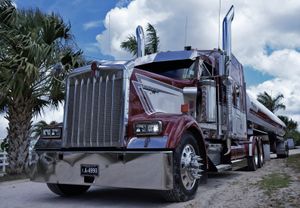2025 NMFC Update: Major Changes for LTL

The most significant change to less-than-truckload (LTL) shipping since the ‘80s happened in July, and the results could drastically increase your shipping spend. Updates to the National Motor Freight Classification (NMFC) have changed how thousands of commodities are classified, impacting every facet of LTL shipping— including LTL freight rating, quoting, and billing.
If you ship using LTL, this blog post could save you significant amounts of time and money. Discover what the NMFC is, how it’s changing, and the one thing you can do to lower its financial impact on your business.
What is NMFC and Why is It Changing?
The NMFC is a standardized system established by the National Motor Freight Traffic Association, Inc., (NMFTA), which categorizes goods for LTL shipping. Designed to simplify shipping procedures and rates, the NMFTA says, “The current NMFC system is complex and can be confusing. This reimagination aims to simplify it, improve user experience, increase classification efficiency, and reduce friction between shippers, carriers, and 3PLs.”
What’s Changing with NMFCs?
On July 19, 2025, the NMFC was updated with new rules governing the packaging, shipping, and handling of freight, using a density-based system. Previous NMFC classifications were either eliminated, updated, or changed. According to the NMFTA website, the changes will be implemented via a phased approach, with the first phase now in effect.
The NMFTA summarizes the updates:
Standardized density scale for LTL freight with no handling, stowability, and liability issues.
Unique identifiers for freight with special handling, stowability, or liability needs.
Condensed and modernized commodity listings.
Improved usability of the ClassIT classification tool.
Without the required density data and appropriate classification on your bill of landing (BOL), shippers can expect:
● 10–30% higher shipping costs
● Avoidable delays
● Accessorial charges
NMFTA provides a 12-point checklist to help shippers make necessary updates to their processes. In brief, the association recommends that shippers review their LTL classifications, audit their BOLs and TMS, WMS, or ERP systems, communicate with carriers and 3PLs, and revamp the training process for their shipping and logistics team to adhere to the new standards.
These updates aren’t just a one-time thing. NMFTA notes, “The July 19, 2025 update is only Phase 1 of a larger overhaul of classification changes planned throughout 2025. Additional reclassifications and rule updates are expected in future dockets, impacting a broader range of commodities and shipment types. This means shippers must continuously adapt.”
How Can You Avoid Significant Increases to Your LTL Spend?
When you stay compliant, you save. If you ship LTL, the NMFC update has the potential to significantly increase your shipping expenses— but it doesn’t have to.
Contact the team at ShipRx today to avoid reclassification charges and get up-to-date, NMFC-compliant product data that you can import directly into your master product database.
Act now to get results fast. We’ll help you update your product database within five days and connect you with operational support for the NMFC 2025 transition on a one-time or managed service basis. Keep your shipments moving smoothly— without any surprise fees.